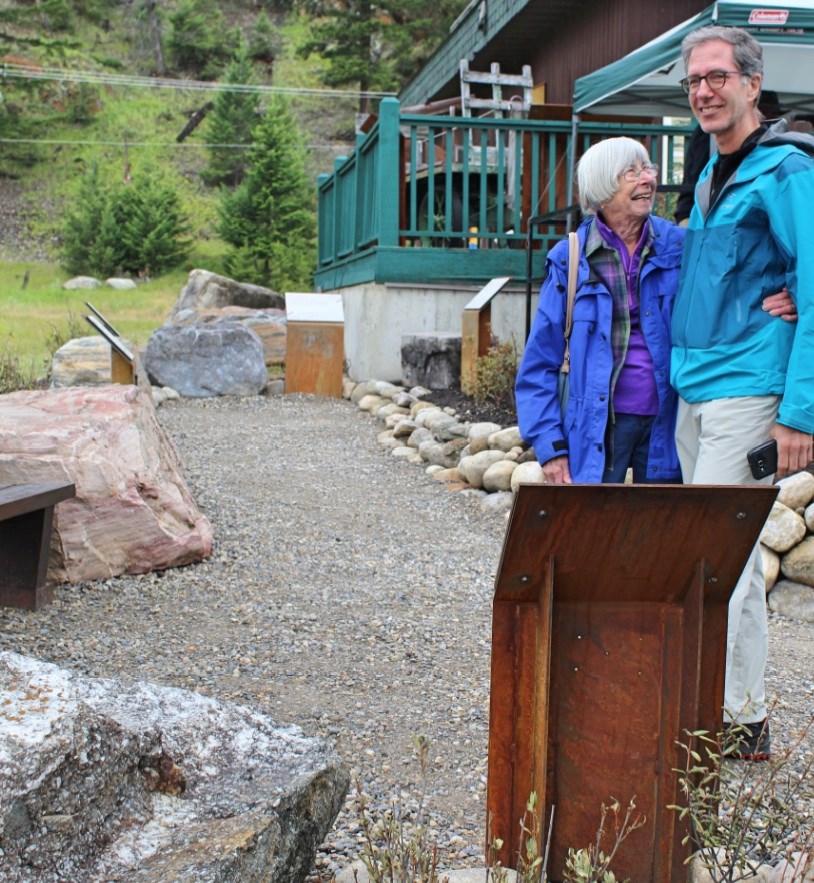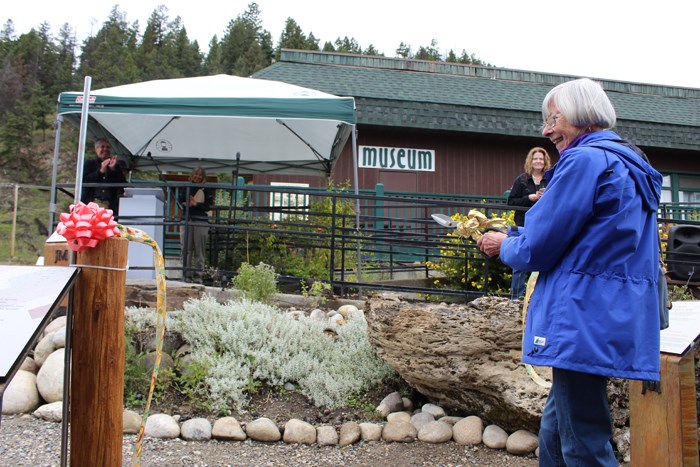
Anita Mountjoy and her nephew Keith Mountjoy in the new interpretive geology garden outside the Jasper Museum and Archives. | F. Dragon photos
Fuchsia Dragon | [email protected]
The building blocks of the Rockies are showcased in new exhibit at Jasper museum.
The geological display and garden has been built in memory of one of the world’s foremost experts on geology in the Rocky Mountains and the go-to authority on Jasper National Park, Eric Mountjoy.
Mountjoy began mapping the park in detail in 1958. He spent two summers exploring the rugged Miette map-area, collecting rock specimens, making notes and collecting aerial photographs.
His geological map was immediately published by the Geological Survey of Canada, and he went on to produce seven more geo-maps of other parts of the park.
Mountjoy died in 2010, but his legacy will last as long as the rocks he studied.
Jasper museum received a bequest from the Mountjoy family in 2015 to provide geological education or research in Jasper.
And after years of solid work from Jasper Yellowhead Historical Society, the exhibit is finally open.
Eric’s wife, Anita, cut the opening ribbon Monday morning and described the new exhibit as “truly a garden of beauty”.

“This is a special, special day for me,” she said through tears. “Eric would be delighted. He loved his profession.”
The rock garden was mostly the work of Roger McQueen, Mountjoy’s second year PHD partner, and Ben Gadd, a Rockies naturalist, writer, interpretive guide.
The duo were thanked at the grand opening by Jasper Yellowhead Historical Society member Warren Waxer, Jasper National Park acting superintendent Moira McKinnon and mayor Richard Ireland.
Ireland said he had walked through the geology garden a couple of days before the opening and “was absolutely stunned by the range of emotions I felt.
“The experience I had was like the water bubbling through the Miette formation for which Dr Mountjoy is best known,” he said.
“I felt a sense of pride in the museum for doing this, and thankfulness that in this part of the country we get to experience and present both human history and natural history.”



